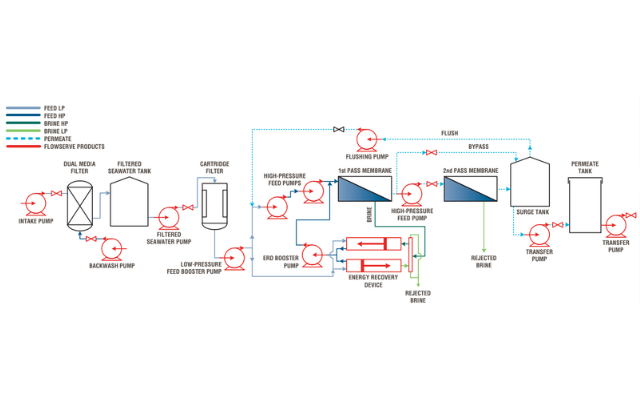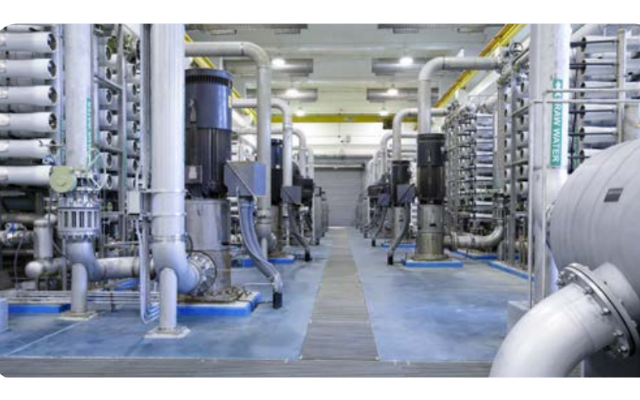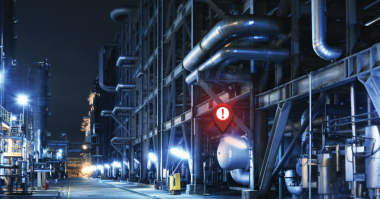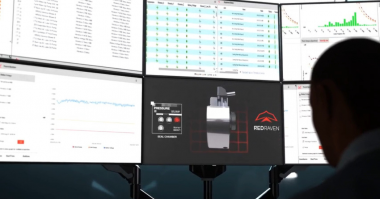As the global demand for clean water continues to grow, safe and reliable desalination solutions are increasingly important to many communities.
Today, the largest desalination users by capacity are Saudi Arabia, followed by the UAE, United States, Oman, Australia, Kuwait, and Israel. Currently, desalinated water is produced around the world by more than 20,000 facilities, and several new mega desalination projects are under construction in the Middle East. This demand has been driven by a variety of factors, including the growing global population, freshwater shortages, improved desalination technology, a decline in construction costs, and an increase in laws protecting natural resources for industrial use.
Seawater reverse osmosis (SWRO) remains one of the most economical ways to produce high-quality water. However, SWRO plants demand energy to power the pumps used in all the different services such as the high-pressure feed pumps required in the desalination process. This energy use has a significant impact on a plant’s operating costs. In fact, power consumption makes up approximately 50% of a desalination plant’s operating expenses, and the high-pressure feed pumps are by far the main contributor.
Given these high energy requirements, one way plant operators can reduce costs is to incorporate energy-efficient equipment whenever possible.
Next-generation, high-pressure feed pumps are designed for efficiency
High-pressure feed pumps play a vital role in reverse osmosis separation, where dissolved minerals are separated from the intake water. During this process, these pumps pressurize low- pressure feed water to about 55 to 80 bar (798 to 1,160 psi) and transfer it into a semipermeable membrane. This process separates pure water molecules from salt ions and other large molecules, including virtually all viruses and bacteria.
Next-generation, high-pressure membrane feed pumps are meeting the desalination industry’s need for energy-efficient and reliable high-pressure pumps. These multistage pumps cover both axially and radially split designs and feature optimized hydraulics, improved product features and advanced materials to reduce energy use without sacrificing reliability or performance in more cost-effective products.
These pumps feature key elements such as:
Computational support and engineering experience
Next-generation, high-pressure feed pumps are designed with advanced computational fluid dynamics (CFD) to provide optimal system performance, reduce energy consumption, and minimize operating expenses. Experience, structural and acoustic resonance aspects and calculations, together with a close collaboration with key suppliers, are additional drivers for new, improved and cost-effective pumps. CFD is also used to analyze, optimize and ensure pumps perform as expected under a variety of conditions.
Radially split casing design
Precision cast diffuser and channel rings – Precision channel rings provide a continuous fluid passageway around the impellers. This design balances radial loads, which maintains higher efficiency and extends pump life. Fully product lubricated – Hydrodynamic axial thrust and radial sleeve bearing. This makes the pump also more compact and eliminates oil or grease as a lubricant. Eliminates high-pressure mechanical seals and reduces pump footprint.
Axially split casing design
Easily accessible components to reduce downtime
Certain pumps use an axially split casing design, which allows maintenance teams to access internal components without disassembling the entire unit. This easy access to the internal components, along with the fully integrated nozzles in the lower half of the casings, allows technicians to perform routine maintenance quickly on-site, reducing maintenance labor and downtime.
Continuous cross-over design to optimize internal losses, increase efficiency and support hydraulic balance.
Combining energy-efficient equipment and OEM expertise
Next-generation, energy-efficient equipment can help SWRO desalination plants reduce energy use and operational costs, but to maximize these savings even further, EPC’s, developers, consultants, and plants should partner with OEMs with proven expertise in the desalination industry.
This expertise can help SWRO operations optimize efficiencies and lower costs across their entire plants. OEMs can work with plants to develop the most efficient and technologically advanced operation, including equipment selection, plant layout, and process improvements. OEMs with a long history in the desalination industry have detailed system knowledge and critical support services to ensure SWRO plants meet their specific energy efficiency and performance goals.
Conclusion
Desalination plants combat the problems of water scarcity around the world. SWRO desalination plants are more energy-efficient than other types of plants, but even SWRO operations consume a large amount of energy, leading to high operational costs.
SWRO desalination plants can reduce their energy consumption and costs by using energy-efficient equipment, such as high-pressure feed pumps, designed explicitly for SWRO plants. This equipment meets the combined needs for energy-efficiency, reliability and performance.
To further reduce energy use and costs, SWRO plants should work with OEMs within the desalination industry — who can not only spec energy-efficient equipment but also optimize efficiencies and lower costs through process improvements and enhanced plant layout.
Flowserve can help
Do you want to learn more about next-generation, high-pressure membrane feed pumps? Please contact Beat Schneider at bschneider@flowserve.com for more information.
Alberto Chinchilla
Alberto Chinchilla has been with Flowserve for more than 11 years. He earned a degree in energetical engineering from Ecole Centrale de Nantes in 2004 and a degree in industrial engineering from Polytechnic University in 2005. Alberto had different responsibilities for Flowserve, such as lead product operation leader and R&D project manager, before he joined the product manager team in 2016. As product portfolio leader, Alberto manages the power, desalination and flood control markets and product lines.
Christian Gratwohl
Christian Gratwohl has been with Flowserve for more than 12 years. He earned an engineering degree from TEKO of Olten in 2001 and a postgraduate study in business administration from Kalaidos of Zürich in 2007. Christian had different responsibilities for Flowserve, such as project manager and application engineer, before he joined the product manager team in 2013. As product manager for desalination, Christian is in charge of all the desalination pump lines and energy recovery devices.







Comments